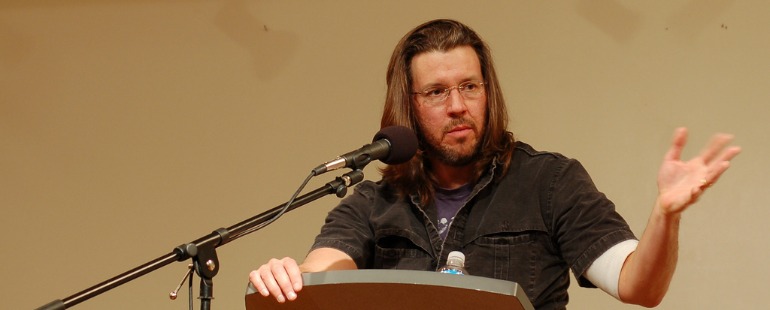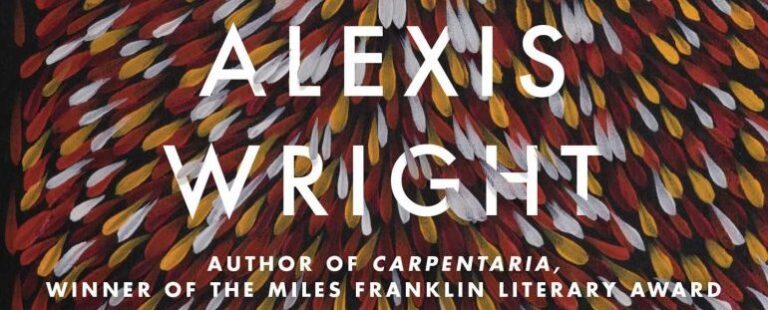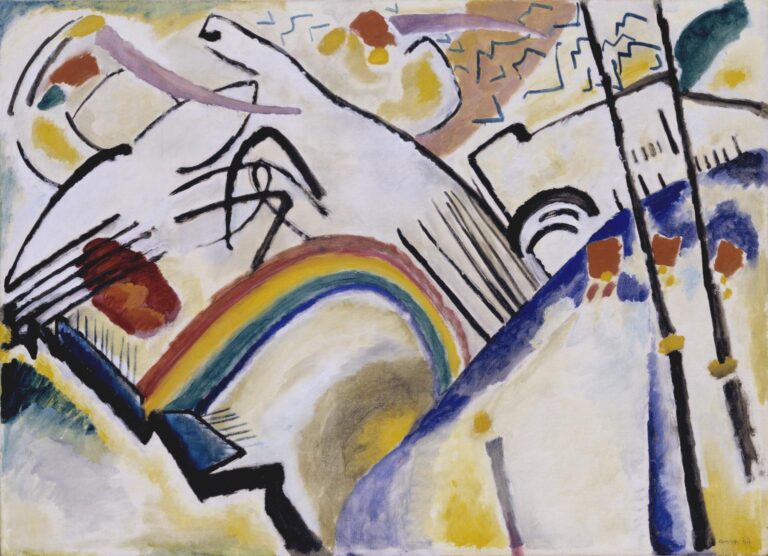The Bricklayer, the Atheist, and David Foster Wallace

There is this wonderful pseudo-parable in Infinite Jest, about 150 pages in, that a State Farm claims agent, murrayf, shares through internal Interlace-System email with his friends at work. “guys, get a load,” murrayf writes, “my def. of a bad day.” The attachment is the first page of a workers’ comp claim, coming out of Boston from a bricklayer, a Dwayne R. Glynn, responding to murrayf’s request for more information than his initial claim: “trying to do the job alone.”
As it turns out, when the accident happens, Glynn is working on a sixth-story roof with 2,000 pounds of brick. To save himself the labor of carrying down the bricks by hand (though Glynn fails to describe how this was even an option) he creates a pulley system, loading the bricks into a barrel and tying the barrel to a rope. Back on the ground Glynn unties the rope, the barrel of bricks suspended, and surprised at “being jerked off the ground so suddenly” he loses what he describes as his “presence of mind” and forgets to let go of the rope. In what soon unveils itself as a sort of proto-Saunders narrative—what Charles Baxter describes as narrative voiced by “haplessly eager victims of hallucinatory capitalism”—the barrel hits Glynn on the head coming down. His fingers land “two knuckles deep” in the pulley six stories above. Only the barrel has now crashed to the ground, its bricks strewn everywhere, the bottom collapsed, and so up the empty barrel goes, a fraction of the weight of Glynn, hitting him again as he’s falling. Lying on the bricks now, “in considerable pain, unable to stand or move,” he confesses to losing his presence of mind once more, lets go the rope, and so the barrel begins its descent yet again when the single-page memo murrayf has shared comes abruptly to an end.
In the context of Infinite Jest, this is a parable about addiction (murrayf tells his pals: “the emerg. room rept. lists a blood-alcohol of .3+, so be pleased to know we’re clear on the 357-5 liability end”). It’s a ship-in-bottle version of the downhill slide from Enfield Tennis’s prestigious Academy to the ramshackle Ennet House Drug and Alcohol Recovery House’s wards. It’s early evidence, on murrayf’s end, of the sort of pain-allergic self-involvement that Wallace is so interested in uncorking: the protective irony, the autopilot veer away from suffering, the fear-masked intellectualism that unite many in Infinite Jest‘s tribe.
But if we fast-forward nearly ten years to his Kenyon College “This is Water” address, this parable proves early brickwork for something larger: a question that Wallace seems to be working and reworking, trying, if not desperately then at least devotedly, to wrestle down. This question goes something like: How might our total lack of presence of mind—culture-saturated, individually bought-into, fired up with a certain insane American, though not exclusively American, belief we are each the center of some deflated, inhospitable universe—lead us, perhaps, if we really look at it, to the most isolated, unnecessary sort of suffering imaginable?
Wallace characterizes this with another parable. An atheist and believer are sitting at a bar, arguing about atheism and belief. They’re in remote Alaskan wilderness, the atheist telling a story about getting caught in a blizzard, totally convinced he’d die. In desperation, out in this blizzard, he lowers to his knees to pray.
Argument Over, says the believer. “You must believe now. After all, here you are, alive.”
The atheist rolls his eyes: “No, man, all that was was a couple Eskimos happened to come wandering by.”
The myth, says Wallace, is that there’s even such a thing as Believer and Atheist, with where you happen to fall on this spectrum being a matter of personal choice/worldview, with each side harboring equally valuable perspective, with what we call Liberal Arts Intelligence being this sort of flat genre of moral relativism in which both guys are equally right. “In the day-to-day trenches of adult life,” says Wallace, “there is actually no such thing as atheism.” There is no such thing as atheism because there is no such thing as not worshipping, with worship being too deep-down and swampy and eternal and human an action to just intellectually Switch Off as if fiddling with a light. In regard to what/how we worship, we actually do have a choice, says Wallace. When we’re not-so-conscious, in our “default setting,” not really paying attention, exhausted and disinterested and checked out, the things we worship, the things we gravitate toward, become those things that eat us alive. For the Alaskan wilderness atheist, what is worshipped is an idea—the mirage of absolute knowledge, of self-sufficiency, of center-of-the-worldness. It’s an idea that twists a story of potential gratefulness and humility into a surface-smooth shrugged-off story worth not much of anything: “all that was was a couple Eskimos.”
In the story of the atheist we see unconscious worship take the shape of the ouroboros, the snake eating its own tail. He takes bite after bite of his worldview, becoming gradually consumed by the picture of the world he’s drawn for himself. There is nothing on this path, says Wallace, but repetitive, entrenched suffering. This is the freedom to be “lords of our own tiny skull-sized kingdoms,” entirely removed from the more important, gratifying, and hard kind of freedom that involves “attention, and awareness, and discipline, and effort, and being able truly to care about other people and to sacrifice for them, over and over, in myriad petty little unsexy ways, every day.”
In the story of the bricklayer we see the incessant up-and-down suffering that happens when we are unconscious to those things, most secretive and deepest, that we worship or desire. We lose our presence of mind. We rise up, crash down, rise up, crash down, over and over, too startled by the incessant drop and ascent to roll away from the debris, to make it out of there.
Wallace, again and again, seems to be saying something like: “OK, what I’m doing/thinking hurts a lot. Also, hey, look at that, I keep doing it. So wait, what exactly is happening?” If the answer is in consciousness, in presence, in paying minute attention to as many details as possible—which, as it turns out, is extraordinarily, stupidly, infuriatingly difficult to do (with at least me, a sample size of one, failing to do this like 97% of the time)—if the hope is in catching if we’re lucky, maybe, some iota of little something that can shake us loose of self-involvement, loose of our worn neural pathways, of our belief that we’ve got this Life thing figured out and that for the most part it revolves around our own petty fantasies and desires, then maybe, if practiced cautiously, there’s something deeply worthwhile in fiction, in art, in the process of trying to witness and record as much detail as possible, in getting it wrong again and again and again.

